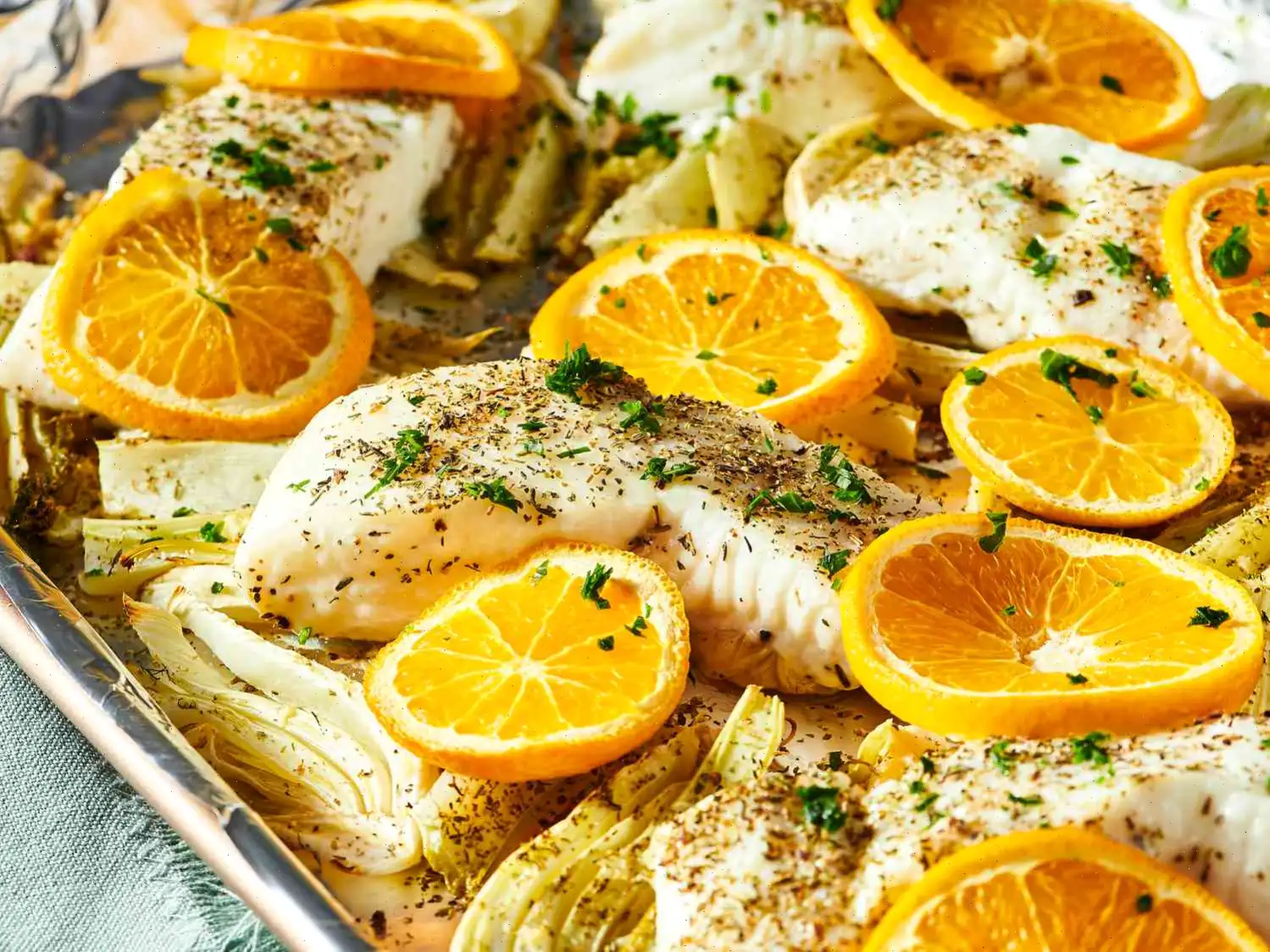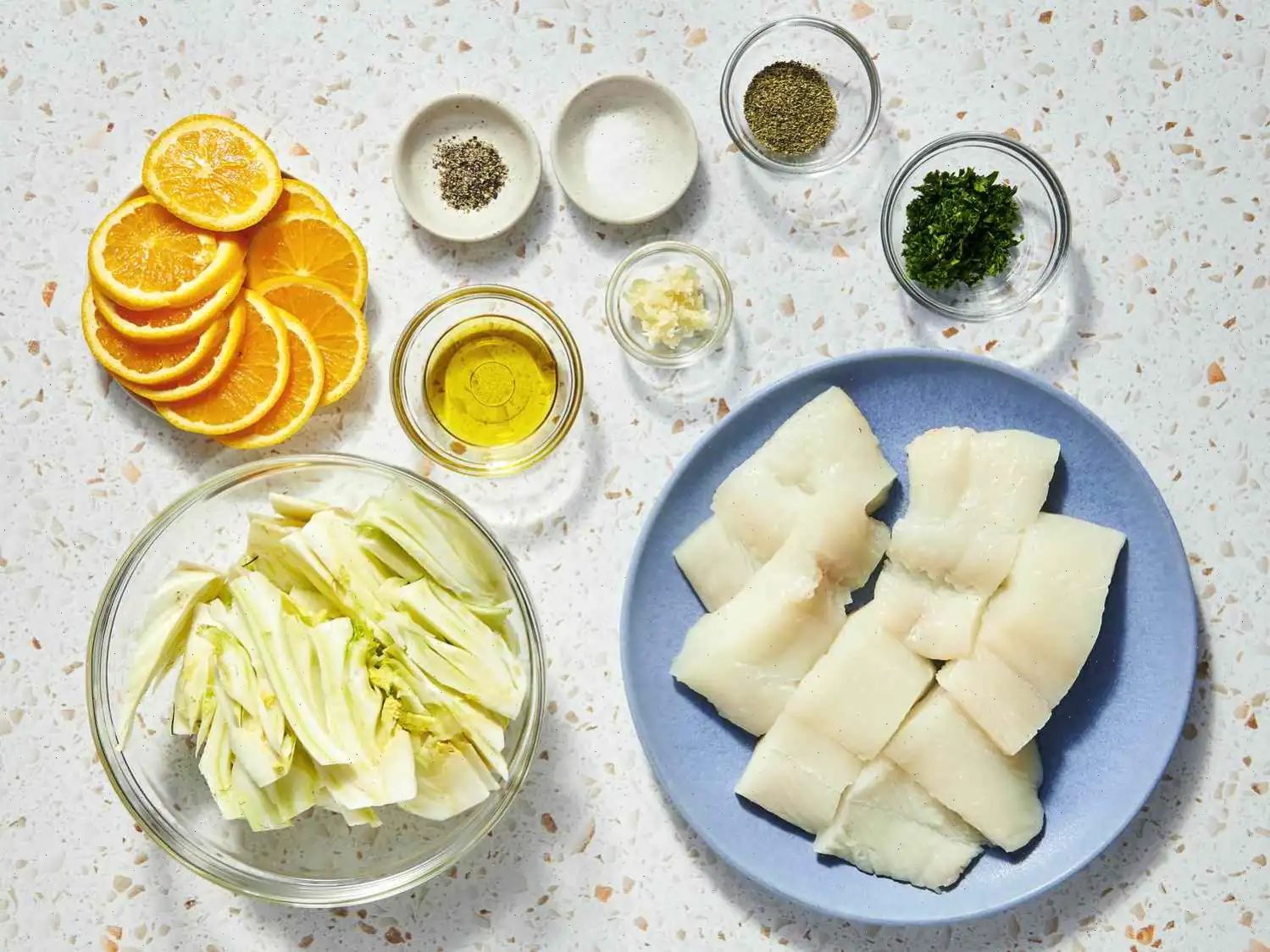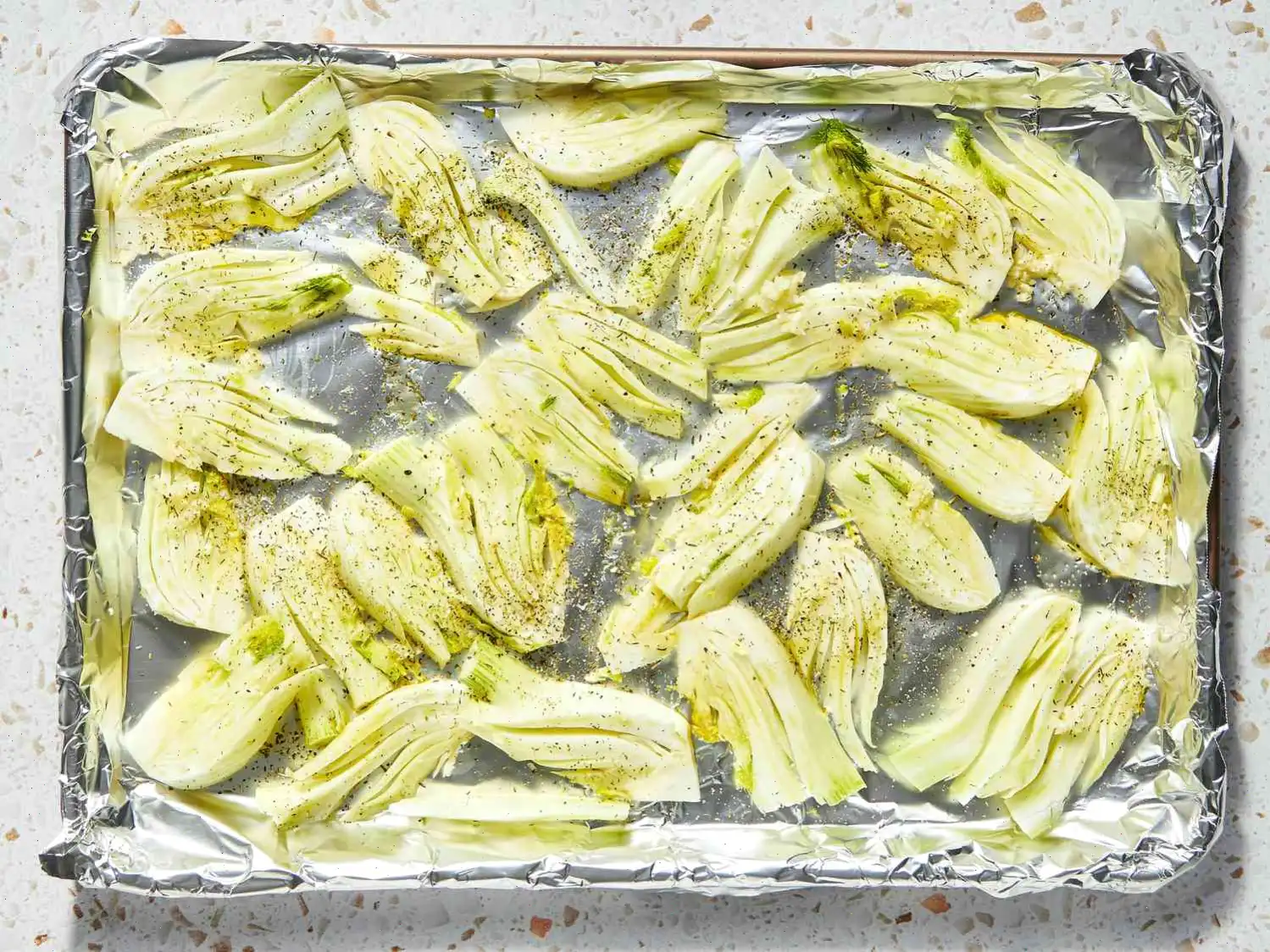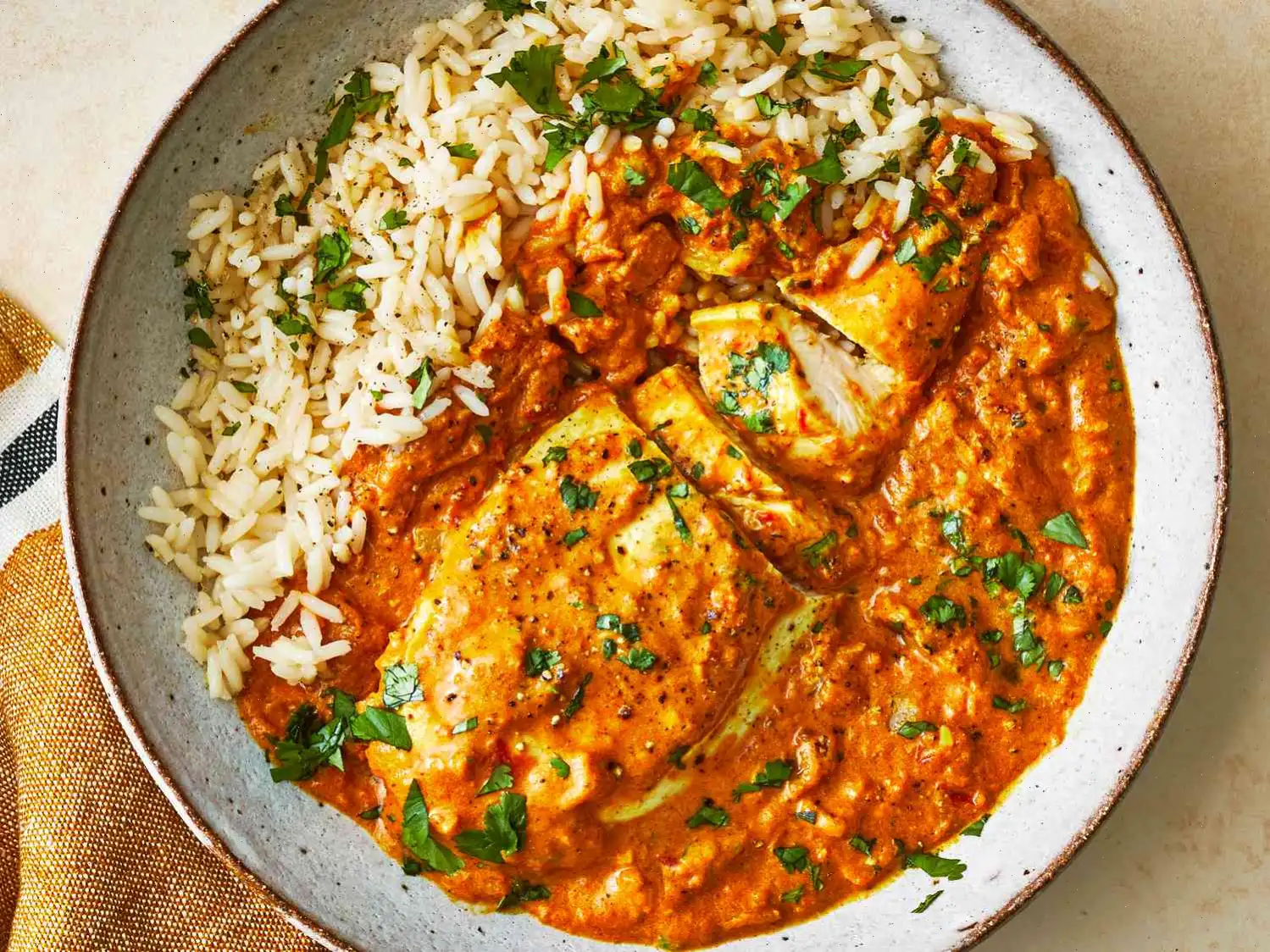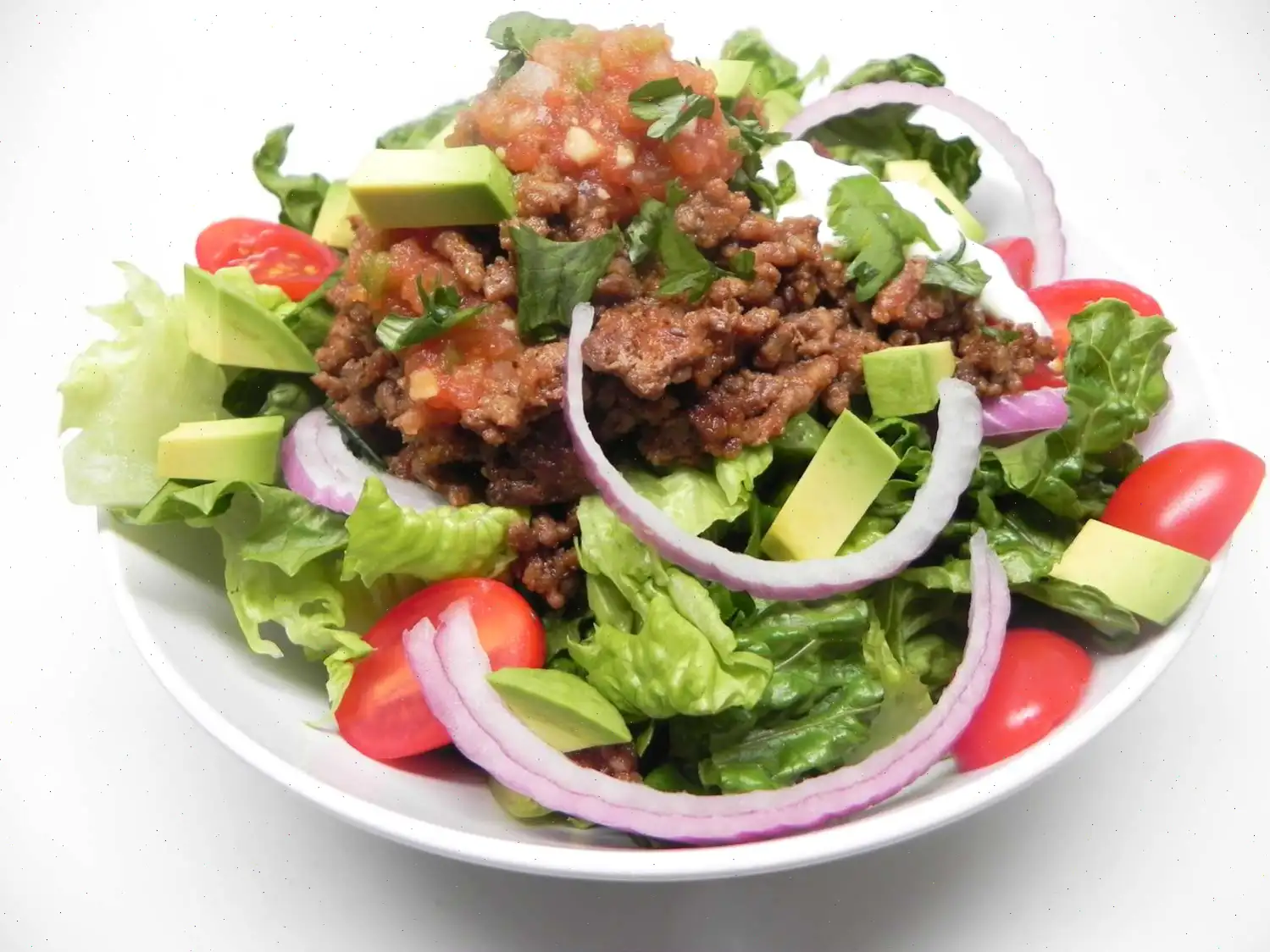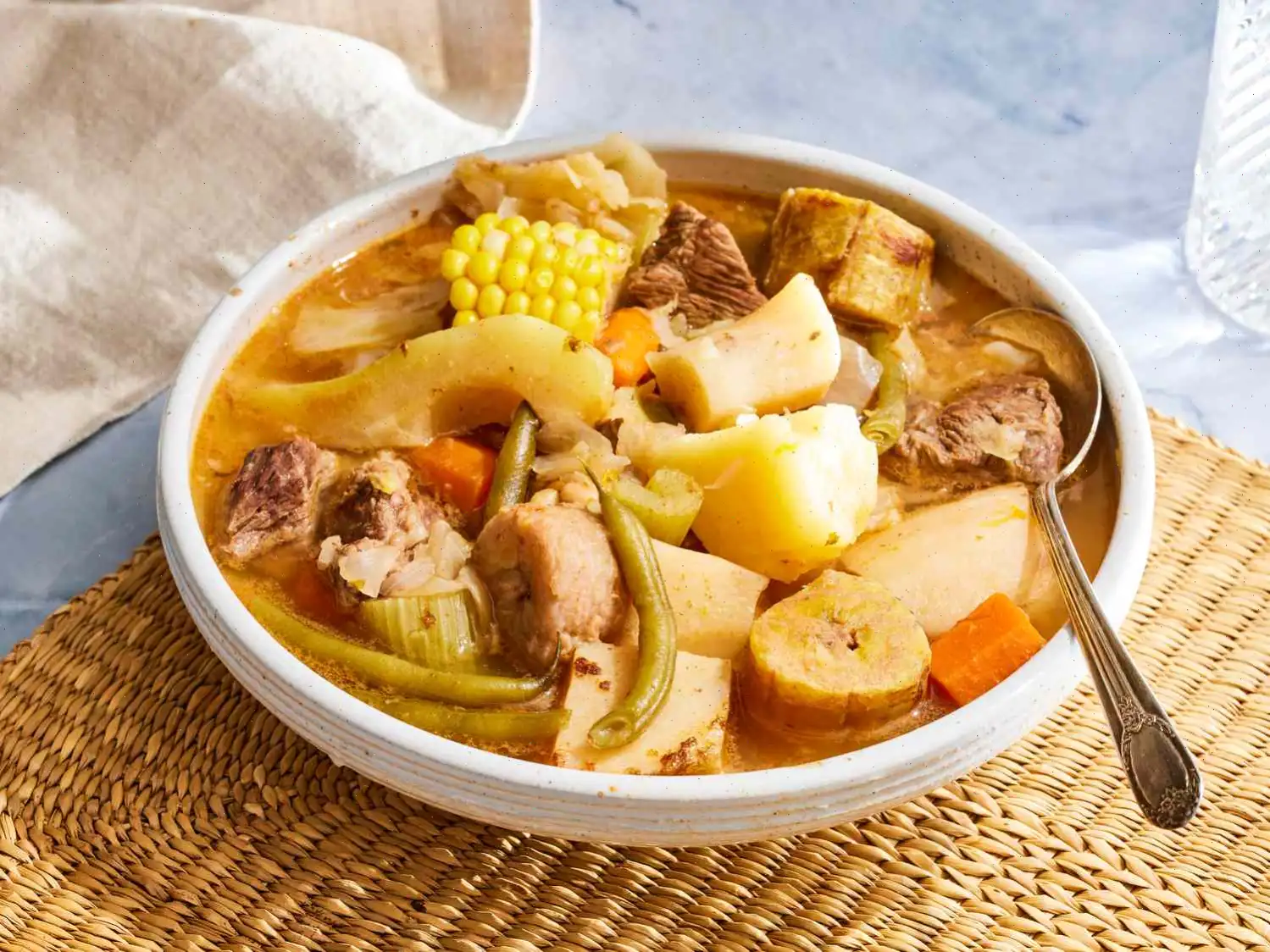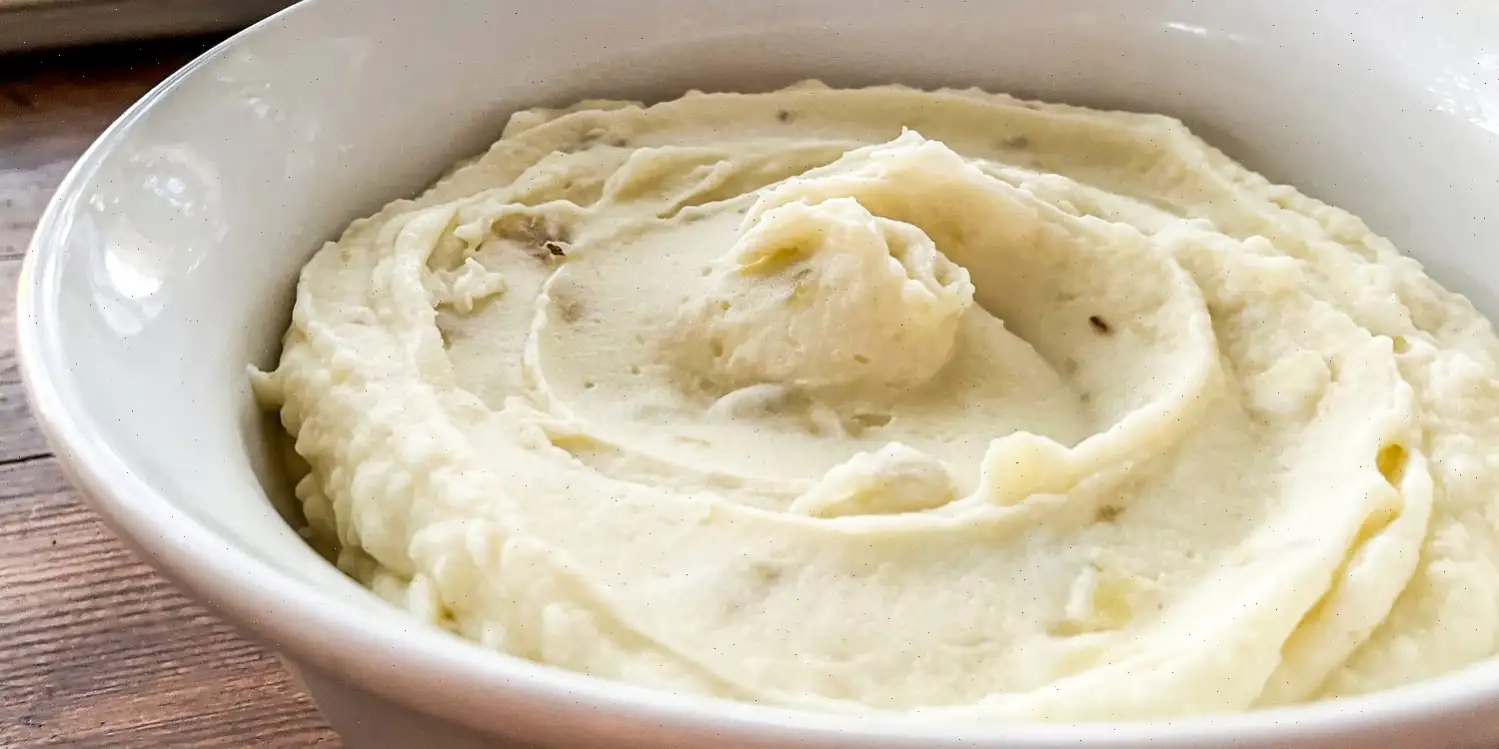
Sheet Pan Halibut with Orange and Fennel Recipe
Ingredients
This recipe is scaled for 6 servings. Quantities adjust automatically, but cooking steps remain the same.
- 1 pound fennel, trimmed and cut into 1/2-inch wedges
- 3 teaspoons olive oil, divided
- 1 tablespoon minced fresh garlic
- 2 teaspoons Italian seasoning, divided
- 1/4 teaspoon salt, divided
- 1/4 teaspoon freshly ground black pepper, divided
- 6 halibut filets (4 ounces each, 1-inch thick)
- 1 orange, thinly sliced
- Fresh parsley, for garnish
Directions
- Preheat your oven to 425F (220C) and line a 10x15-inch baking pan with foil.
- Arrange the fennel in a single layer on the pan. Drizzle with 2 teaspoons of olive oil and sprinkle with garlic, 1 teaspoon of Italian seasoning, and 1/8 teaspoon each of salt and pepper. Roast until the fennel begins to soften, about 10 minutes.
- Place the halibut filets on the pan. Drizzle with the remaining 1 teaspoon of olive oil, then season with the remaining 1 teaspoon Italian seasoning and 1/8 teaspoon each of salt and pepper. Lay orange slices on top of the fish.
- Return the pan to the oven and roast until the fennel is tender and the fish flakes easily with a fork, approximately 8 to 12 minutes.
- Remove from oven and garnish with fresh parsley before serving.
Nutrition Facts (per serving)
- Calories: 280
- Total Fat: 5g (6% DV)
- Saturated Fat: 1g (4% DV)
- Cholesterol: 68mg (23% DV)
- Sodium: 223mg (10% DV)
- Total Carbohydrate: 34g (12% DV)
- Dietary Fiber: 7g (26% DV)
- Total Sugars: 22g
- Protein: 29g (57% DV)
- Vitamin C: 132mg (147% DV)
- Calcium: 140mg (11% DV)
- Iron: 1mg (7% DV)
- Potassium: 1294mg (28% DV)
*Percent Daily Values are based on a 2,000 calorie diet. Nutrient information is approximate and may vary depending on ingredients. Consult a healthcare professional for medically restrictive diets.
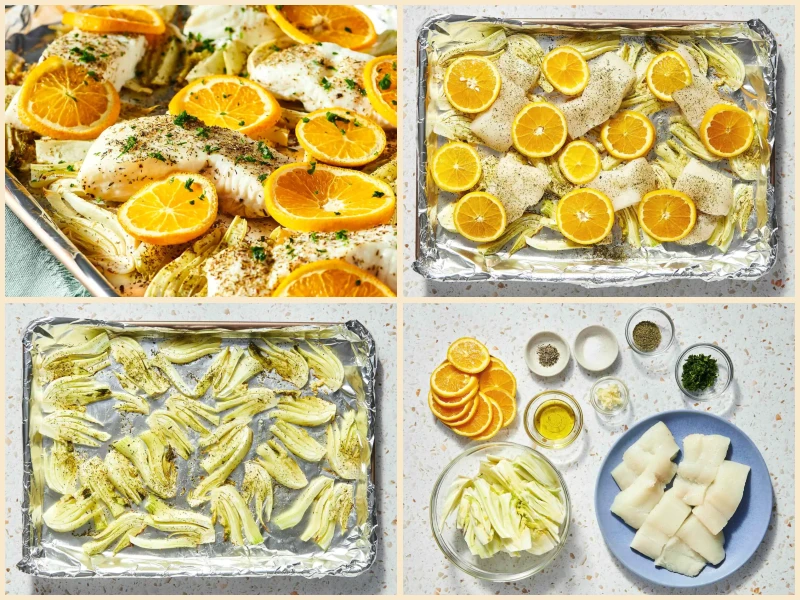
History and Origins of Sheet Pan Halibut with Orange and Fennel
The combination of halibut, citrus, and fennel has roots in coastal European cuisine, particularly in Mediterranean regions where fresh seafood and fragrant vegetables are staples. While halibut itself is native to the North Atlantic and Pacific Oceans, pairing it with citrus and anise-flavored fennel reflects a culinary tradition of balancing rich, flaky fish with bright, aromatic ingredients. Sheet pan cooking, however, is a more modern innovation from the United States, gaining popularity in the early 21st century as home cooks sought efficient, flavorful, and minimal-cleanup methods for preparing complex meals.
Regional Variations and Characteristics
In American coastal kitchens, this dish often emphasizes simplicity and freshness: a few high-quality ingredients, minimal seasoning, and precise cooking to preserve the delicate texture of the halibut. In Mediterranean adaptations, chefs sometimes add olives, capers, or a drizzle of white wine, while Northern European versions may include root vegetables like carrots or parsnips roasted alongside the fennel. These regional tweaks highlight local produce while maintaining the dish's core identitytender halibut paired with sweet, fragrant citrus and fennel.
Differences from Similar Dishes
While similar to other baked fish recipes, Sheet Pan Halibut with Orange and Fennel stands out due to its combination of citrus slices layered directly on the fish and the use of fennel as both a roasted vegetable and aromatic element. Unlike classic fish en papillote (fish baked in parchment) or poached halibut dishes, this recipe uses direct heat on a single pan, creating a gentle caramelization on fennel and a subtly roasted flavor on the fish. The balance of sweet, tangy, and savory distinguishes it from simpler lemon-butter baked fish recipes.
Typical Serving Settings
This dish is commonly served as a centerpiece at family dinners, casual weekend lunches, or small dinner parties. Its elegant presentation with bright orange slices and fresh parsley garnish makes it suitable for both home dining and light, upscale restaurant menus. Often paired with roasted potatoes, quinoa, or a crisp green salad, it exemplifies a complete meal that is visually appealing and nutritionally balanced.
Interesting Facts
- Halibut is one of the largest flatfish species, capable of reaching over 400 pounds, though recipes typically use smaller fillets for even cooking.
- Fennel, with its mild licorice flavor, was historically used in Mediterranean cooking not only for taste but also for digestive benefits.
- The use of orange slices directly on fish is a technique inspired by traditional Southern European cuisine, where citrus is often paired with seafood to enhance natural flavors.
- Sheet pan cooking reduces cleanup and allows all ingredients to roast together, creating a subtle layering of flavors that is difficult to achieve with stovetop methods.
- Modern adaptations often include a light drizzle of olive oil or a sprinkle of fresh herbs just before serving, emphasizing freshness and aroma.
FAQ about Sheet Pan Halibut with Orange and Fennel Recipe
Comments
Mark Carter
07/29/2024 06:25:27 AM
I prepared this recipe with a twist to enhance the flavors. I juiced two oranges and combined them with garlic and dill, then heated the mixture and thickened it with cornstarch until it reached a gravy-like consistency. I drizzled this sauce over the fish after plating it, as I felt it needed a boost in flavor. I also roasted the fennel for a bit longer and added whole garlic cloves and slivered shallots, which I believe elevated the dish and gave it a more pronounced taste.
Nicole Moore
10/14/2022 01:05:21 AM
No more overcooked halibut! I always struggled to achieve the perfect doneness when cooking halibut on the stove, but baking it using this method resulted in a wonderfully tender texture. The fish easily flakes apart with just a gentle touch of a fork. The addition of orange slices provides a delightful sweet and sour flavor, while the aroma of fennel is simply heavenly, particularly as the dish rests on the kitchen counter ready to be served. Drizzling some butter over the hot fillets on the sheet pan added a richness that enhanced the dish even further.


